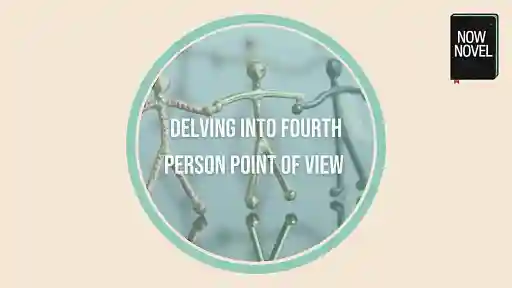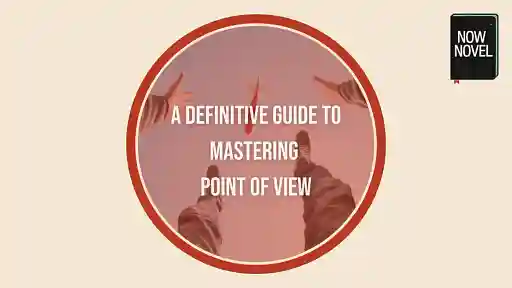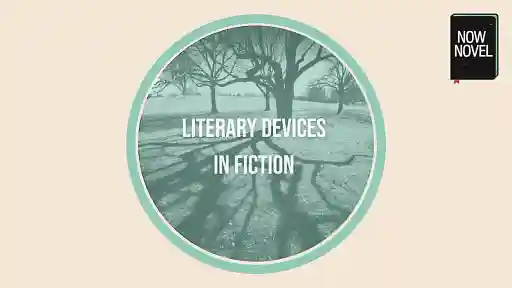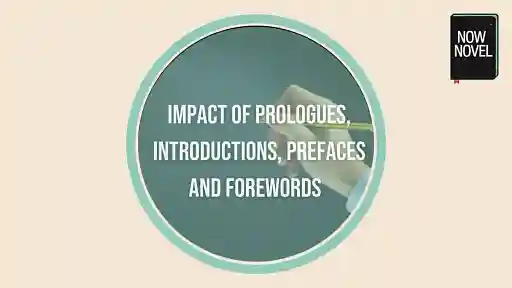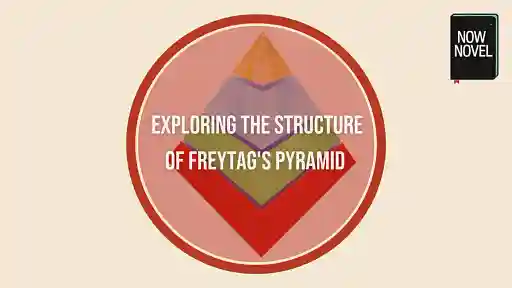Finding a great story premise that excites you and motivates you to write is a great win. Yet finding how to turn a premise into a plot with greater detail is trickier. Try these 7 tactics to build your story idea into an engaging narrative:
1. Use simple writing prompts to ask helpful questions
So you've found an interesting or unusual central idea. For example:
- A spoon and a can of beans go on a wild adventure (the actual premise of Tom Robbins' Skinny Legs and All)
- Children with special talents are abducted and sequestered in an institution where the sinister staff seeks to extract their gifts through harsh methods (Stephen King's The Institute)
- A family crisis tests the bonds and ideals of a renowned poet and her siblings (Tara Conklin's The Last Romantics)
A potent question to develop plot further is 'What if?'
For example, if we take the premise for Tom Robbins' 1990's madcap adventure story:
- What if the can of beans is punctured and begins to leak?
- What if the spoon lands up on rail tracks and there's an approaching freight train?
- What if the two objects are separated, how are they reunited?
Even inanimate objects can have interesting and suspenseful 'character' arcs, when you place them in unpredictable and tense situations.
[Use the Now Novel process to answer easy, structured prompts that tease out your plot's potential and outline as you go.]
2. Brainstorm key story conflicts
Behind every great story there's a conflict. Whether it's an obvious conflict (such as the battle between four kingdoms for a throne) or something subtler. A bored postal clerk's unfulfilled desire and internal struggle to find the courage to front a rock band, for example.
Once you've summarized your central idea, ask:
- What conflicts could arise in this situation?
- What are the stakes involved (who stands to lose what?)
- What could lessen the conflict and what could make it worse?
For example, taking Stephen King's premise ('an institution abducts children to extract their gifts through harsh methods'), questions to find conflict include:
- Who among the children obey their captors and who rebel? (What conflicts might the abductees initiate, in other words?)
- What becomes of the children whose gifts are successfully extracted? (What are the stakes?)
- What events during their being held captive could offer the children a ray of hope (and what could make being rescued more remote)?
Once we have ideas for struggle (between characters, within them, or between people and their environment), we have fodder for unexpected turns and the engrossing, dramatic rise and fall of action.
3. Plan diverging character paths
A story premise such as Stephen King's is rich with potential because it has potential for multiple interesting character paths.
For each abducted child there are interesting questions to answer about their path to the Institution. For example:
- What is their 'gift'?
- How did the institution find out about it?
- When and where does their abduction happen?
- How do their friends or families respond?
One family might come together in fighting the Institute. Another might break apart in the fallout from the grief of the situation.
Understanding characters' backgrounds, wants and fears will help to imagine the different routes they take given the same set of circumstances.
[Brainstorm each character's motivations, fears and flaws in the dashboard and import all your outlining work directly to Google Docs using our free Docs add-on.]
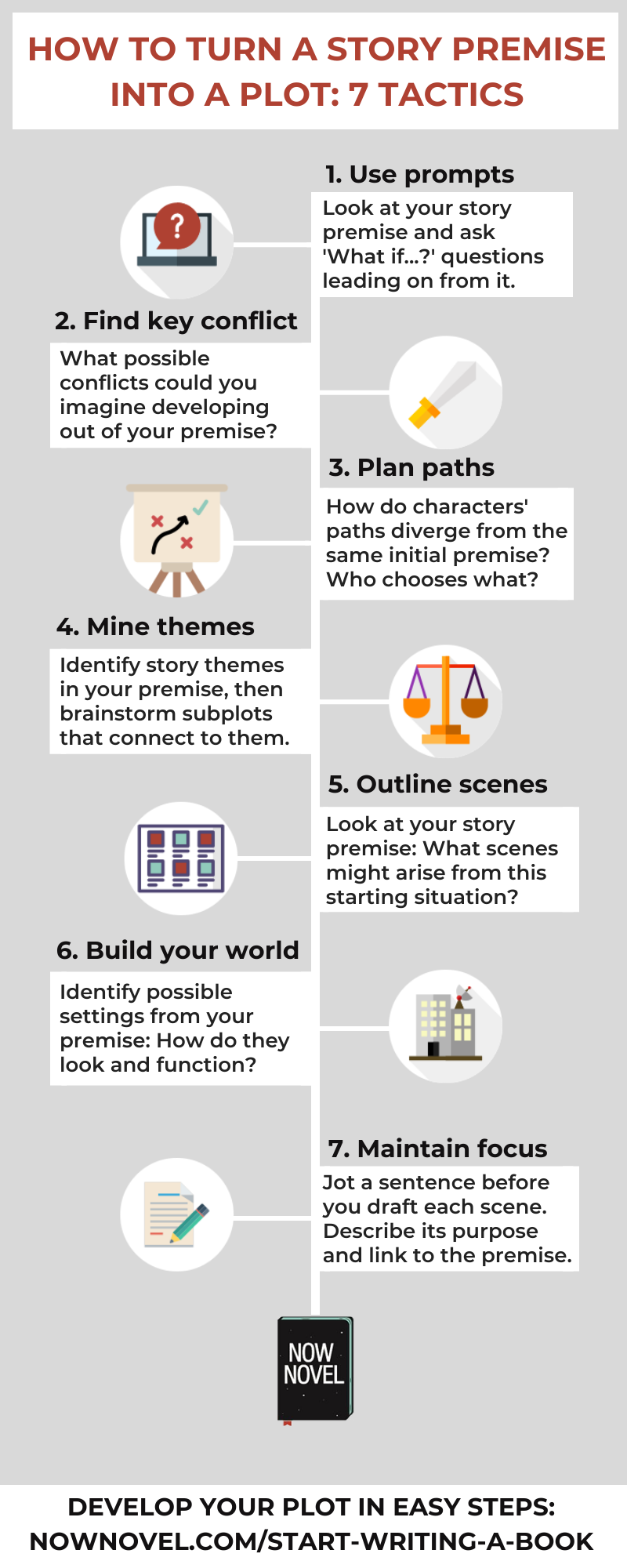
4. Mine your themes for subplot ideas
In turning a premise into a plot, knowing potential themes will help you find subplots - secondary plot threads - that add to the cohesion of your story (how it all fits together).
For example, for King's story idea, a theme could be 'the danger of institutions having too much power'.
Stephen King's story premise gives us a general situation for the plot. The Institute's abduction of children and harmful extraction of their gifts. Looking further at the theme of institutional power gone awry, a subplot could explore:
- The role of government and government policy in the Institution's practices continuing (for example, does the government allow or even sponsor the Institution's sinister methods?)
- The role of the family in holding institutions accountable
Perhaps the Institution could have a secret, sinister government mandate to separate families, for example.
Looking to thematic threads already present in your story premise is a useful way to uncover further questions and the plot details they yield.
5. Outline possible scenes
One way to jog more ideas from your initial story premise is to begin outlining actual scenes.
A more fleshed out scene idea may awaken new ideas you hadn't thought of. Take a scene summary for a hypothetical scene from King's story premise (created using Now Novel's Scene Builder tool):
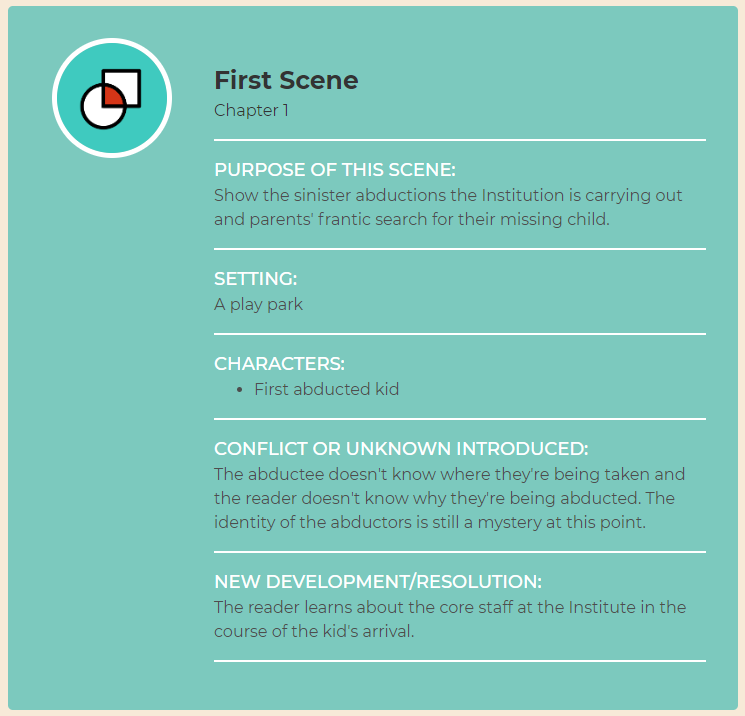
Outlining a possible scene drawn from your story premise will help you find other story development questions you haven't answered yet. For example:
- Where are the children abducted from?
- When do they first realize where they've been taken?
- How does the Institution carry out their operations?
6. Explore your story's world
When you summarize your story's central idea, the focus is often on key conflicts and characters.
A useful next step after you have your idea is imagining your story's world in greater detail.
If we were Stephen King, we might ask questions such as:
- Where is the Institute located?
- How are entry and access controlled?
- Who is free to come and go (who has authority and freedom there?)
Knowing a story's setting - the environment - is crucial to imagining what is possible. What communication between captives is possible, for example, in an institution such as a sinister facility extracting children's gifts?
7. Keep each scene's purpose in focus
To turn your story premise into a plot, it's helpful to keep your premise and its core conflict in mind as you outline or draft each scene.
You could even print out your core idea and jot down a sentence or two in an outline for each scene before you write it, describing how it connects to your premise.
For example:
-
Scene 1: Jimmy is abducted by an operative of the Institute from a park when his parents have their backs turned for a moment.
Purpose or link to premise: Reader sees how the Institute conducts its operations; sinister tone is established.
-
Scene 2: Jimmy meets the head honcho at the Institute for the first time; realizes the danger he's in when they blather on about his gift.
Purpose/link: Reader meets some of the people who run the Institute and begins to have an inkling of why they're abducting people.
Taking a minute to work out the primary focus of the scene you're about to write will help you to keep a running thread of story development and a sense of cohesion in your plot.
Get help developing your plot with constructive feedback and support and finally finish your story.


